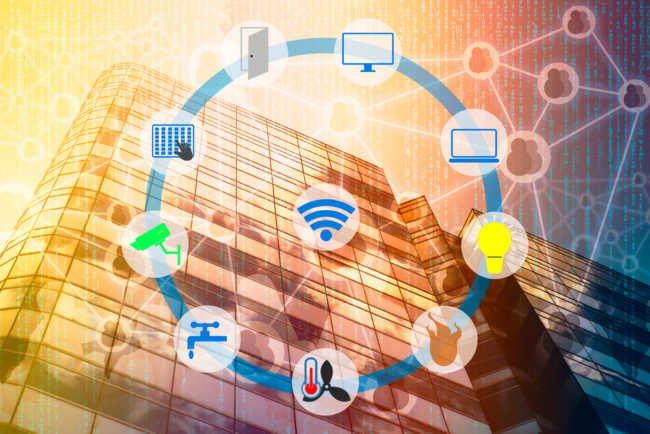Why smart buildings represent a great business opportunity
Buildings are an integral part of everyday life. With people spending an estimated 90 percent of their lives indoors, the drive to ensure that those buildings are comfortable, safe, secure and provide the functionality that we want is more important than ever. But how do we take what are essentially inanimate, silent and passive structures and turn them into living environments that can interact with their occupants, learn from them and ultimately adapt to their changing needs? Welcome to the world of the smart building.
The world is facing many challenges: globalization, climate change, urbanization, shifting demographics and technological innovation to name but a few. While the effects of these challenges are not confined to the built environment, they are all influencing the way that we live and work. Creating a smart energy management solution for smart buildings and digitalization is happening everywhere, from the ever-increasing shift away from physical money to the ways in which we consume information. However, buildings represent one of the most significant areas for harnessing the potential it has to offer.
Buildings: passive assets
Typically buildings have little or no connectivity and are therefore inflexible and unable to adapt. This approach is based on a somewhat simplistic view of buildings as an expense – a place just to do business and house people and assets. This is an outdated view and does not recognize the potential for a building to become more agile and flexible.
In doing so, it can actively contribute as a member of the team. If the building is not being put to work to optimize performance and efficiency and drive employee and revenue streams, then a vital element of the team is being ignored.
The shift to the smart building
People now expect more from their buildings and with the advance in digitalization, they are seeing rewards. There are now billions of connected devices installed throughout the world, enabling buildings to communicate with their owners, their occupants, their tenants and their maintenance teams: effectively giving buildings a voice. The amount of data being generated by these devices is immense and is only set to grow. Projections suggest that up to 50 billion IoT (Internet of Things) devices will exist by 2020, with around one fifth of those being in building applications. What is important is how to derive benefits from these connections. The power comes when data is properly structured, analyzed and put to work. Starting on the right path to a smart building is not as intimidating or as expensive as it might first appear. Contrary to some opinion, it does not require a rip and replace. Current infrastructure can usually be employed as the foundation from which to make smart innovation investments. These can also be made in phases to spread the cost.
This is an excerpt from the “Smart buildings – Striving for the perfect place” white paper sponsored by Siemens.
Contents of the white paper:
- Buildings: passive assets
- The shift to the smart building technology
- The stages of the smart revolution
- The value of smart buildings
- Differentiation and top-line growth
- Improve cost structure: reduce operating costs and increase productivity
- Reduce risk: enhanced safety and increased uptime
- Controlling the environment
- Technological trends to watch
- The Siemens commitment to smart buildings
- What are Intelligent Buildings?



